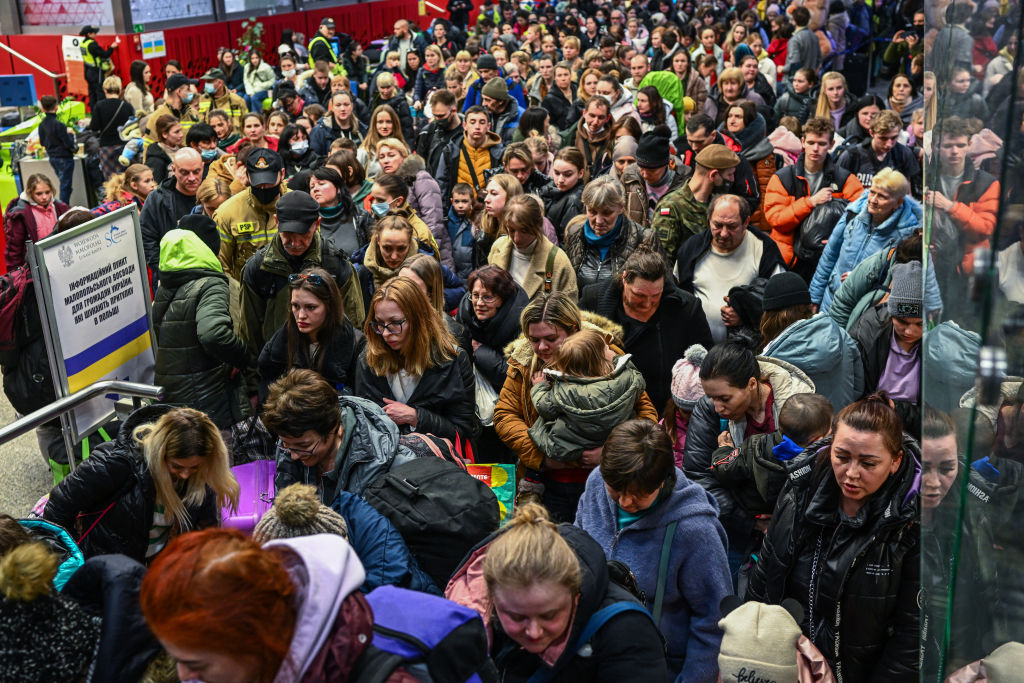
Western leaders are well aware of the dangers of a Russian victory in Ukraine. ‘When dictators and autocrats are allowed to run roughshod in Europe,’ US President Joe Biden recently observed, ‘the risk rises that the United States gets pulled in directly,’ with the consequences reverberating around the world. Specifically, he noted previously, if Russian President Vladimir Putin attacks a NATO ally, ‘we’ll have something that we don’t seek and that we don’t have today: American troops fighting Russian troops.’ Similarly, NATO Secretary-General Jens Stoltenberg recently warned that if Putin wins in Ukraine, there is real risk that his aggression will not end there.
Let us play Cassandra. The US has failed to deliver the $60 billion in aid it has promised to Ukraine, and the European Union has likewise proved unable to fulfill its €50 billion (US$54.8 billion) pledge. Because these failures are rooted solely in internal politics, no amount of charisma and persuasion on the part of Ukrainian President Volodymyr Zelensky, or pluck and perseverance on the part of the soldiers fighting under General Valery Zaluzhny, can make much difference.
Suppose that aid never materialises. Without sufficient weapons and munitions, Ukraine’s military would eventually have to capitulate to Russia. As commentator Simon Kuper recently pointed out, Russia has already carried out ‘mass executions, castrations, rapes, torture, and abductions of children’ in Ukraine, there is good reason to think that such a surrender would not end the violence there. Putin’s forces – comprising largely ex-convicts and untrained soldiers – may well inflict terrible ‘victor’s justice’ as they occupy all of Ukraine’s territory.
Russian occupation would not necessarily lead to total occupation and annexation, as was the case for Crimea, and later for partially occupied Donetsk, Luhansk, Zaporizhzhia, and Kherson. Putin might choose, instead, to install a puppet regime and claim to have achieved the ‘demilitarised,’ ‘denazified,’ and ‘neutral’ Ukraine he sought all along.
But would Putin’s revanchist agenda end there? We believe that Putin would then set his sights on NATO countries, beginning with Poland. Frequently targeted in Russian propaganda, Poland is not only a member of both NATO and the EU—and Polish voters recently rejected right-wing populism in favor of a strongly pro-Western government. This makes it a prime target for a Russian invasion.
Officially, it might not be Russian soldiers who descend on Poland. Putin has been known to preserve deniability by sending proxy armies and troops without insignia (such as the ‘little green men‘ who seized Crimea in 2014) and flying made-up flags in made-up ‘people’s republics.’ One should not be surprised if soldiers enter Poland wearing Ukrainian uniforms, carrying Ukrainian passports, and flying Ukrainian flags.
Putin may already be rehearsing such a scenario. There have been reports of Ukrainian prisoners of war being drafted to fight against the Armed Forces of Ukraine. In a dispatch by RIA-Novosti, one of the 70 POWs fighting in the ‘Khmelnitsky’ unit, Kirill Spassky, describes the POWs in combat and mentions that there were no Russian ‘barriers’ standing behind them with their guns ready to prevent them from deserting.
Kremlin propaganda would spin any apparent clash between Ukraine (by then a Russian puppet state like Belarus) and Poland as a result of, say, grain disputes, while highlighting old animosities going back to the 1943 Wołyń/Volhynia massacre. With the Kremlin already regularly perpetuating the lie that Poland dreams of taking back Western Ukraine, it would be no great leap for it to claim that Ukraine had little choice but to strike first in what was an inevitable conflict. (In Putin’s own words, he learned in the streets of his hometown of Leningrad that ‘when a fight is inevitable, you have to hit first.’)
This narrative might even convince some Ukrainians. After all, this scenario begins with the US breaking its promise to stand with Ukraine ‘for as long as it takes’, and the EU failing to provide anywhere near the one million rounds of artillery ammunition it pledged in March 2023. Ukrainians have shown courage, determination, and patriotism in the fight against Russia, but if Western aid dries up, they will feel utterly betrayed.
A faux-Ukrainian invasion of Poland certainly should trigger Article 5 of the NATO Charter, which states that an armed attack against one or more NATO members ‘shall be considered an attack against them all’. But there is reason to believe that NATO might choose not to act. Already, some commentators are laying the groundwork for such a betrayal. ‘Article 5 isn’t sacrosanct,’ Kuper writes.
It would not be the first time Poland was left high and dry by those who had promised to protect it. When Hitler attacked Poland in 1939 and divided it with the Soviet Union, Poland’s allies, Britain and France, did not intervene. Likewise, both the US and the United Kingdom have shirked their obligation under the 1994 Budapest Memorandum to guarantee Ukraine’s sovereignty.
So, are we headed toward World War III by proxy? Will Russia manage not only effectively to seize Ukraine, but also to invade Poland (and potentially other countries), without ever having to face NATO head-on? Putin is, after all, a master of deniability. Russians even have a saying for blunt disavowal of responsibility: ja nie ja (‘I am not me’).
Such an outcome is hardly far-fetched, nor is it inevitable. The US and the EU can avert this nightmare scenario by delivering the aid to Ukraine that they have promised. One hopes that recognising the possible consequences of abandoning Ukraine will provide the wake-up call they need.

